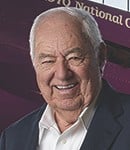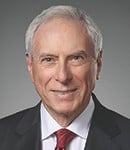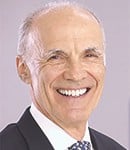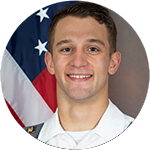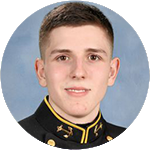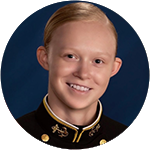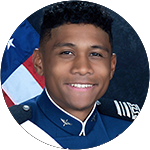2024 Winners
Commercial Aviation
BEA (Bureau d’Enquetes et d’Analyses pour la sécurité de l’aviation civile)
French air accident investigation office BEA has identified trends confirming aircraft in the approach and landing phase remain vulnerable despite equipment sophistication. The bureau is improving its investigation methods with new sources of data, such as smartphones. BEA is also investing in the 3D analysis of large mechanical parts, a lesson learned from uncontained engine failures.
Rolls-Royce UltraFan
Rolls-Royce conducted the first run of its UltraFan geared turbofan demonstrator in April 2023 in the Testbed 80 facility in Derby, England. With a fan diameter of 140 in., the UltraFan is by physical size the largest jet engine ever run. The test also marked the first run of a new-centerline large-fan engine at Rolls since the Trent XWB-84 in 2010.
Universal Hydrogen
Universal Hydrogen’s De Havilland Canada Dash 8-300 propulsion testbed became the largest hydrogen-electric-powered aircraft yet to fly in March 2023, taking off with one of its two turboprop engines replaced with a 1 megawatt-class fuel-cell powertrain in a key milestone for the startup’s efforts to introduce zero-emission hydrogen propulsion beginning with regional aviation.
American Airlines HEAT
American Airlines’ Hub Efficiency Analytics Tool (HEAT) is targeted at improving operational performance during severe weather or other events affecting flights. The tool uses data from various sources, weighs them and shifts departures and arrivals at hubs to minimize disruptions. The tool has prevented around 1,000 cancellations since it was introduced in 2022.
Güliz Öztürk, Pegasus Airlines, for leadership
Güliz Öztürk has led the remarkable comeback of Pegasus Airlines as CEO since 2022. Pegasus is one of the most profitable airlines globally, following a highly successful low-cost carrier model mainly from its biggest base at Istanbul Sabiha Gökçen airport. Öztürk has not only delivered strong financial results but is also a keen supporter of gender equality and diversity.
Defense
Saab Gripen E
The Saab Gripen E entered service with the Brazilian Air Force in December 2022, marking a milestone in development of a next-generation version of the Swedish fighter. With Brazil’s selection of the Gripen E/F in December 2013, the program became a joint development effort with Brazilian industry joining Saab’s supplier partners. The first series production Gripen E for Sweden was handed over in October 2023.
Nammo THOR-ER
In August 2023, the THOR-ER team from Norway and the U.S. twice test-fired a solid-fuel ramjet missile, demonstrating significant increases in effective range. The tests demonstrated new high-energy fuels, advanced air injection and throttling methods needed for future solid-fuel ramjet systems. The tests also highlighted international collaboration, involving the U.S. Naval Air Warfare Center, Norwegian Defense Research Establishment and Nammo.
Northrop Grumman B-21 Raider
The U.S. Air Force's B-21 Raider bomber flew for the first time on Nov. 10, 2023 – eight years after contract award and less than a year after its public rollout at Northrop Grumman's Plant 42 facility in Palmdale, California. The milestone opens the door for the company to begin low-rate initial production of the first new U.S. bomber in three decades.
X-62A VISTA
Calspan and Lockheed Martin collaborated to transform the U.S. Air Force’s F-16D Variable In-flight Simulation Test Aircraft (VISTA) into the X-62 and enabled the first testing of synthetic artificial-intelligence pilots in a supersonic aircraft. This has provided the template for work on developing autonomy for the Air Force’s planned Collaborative Combat Aircraft family.
Western missile integration for Ukraine
A challenge for the Ukrainian forces has been to erode the advantage of Russian’s much larger air force and air defense systems. A team from the UK rapidly figured out how to launch MBDA Storm Shadow long-range cruise missiles from Ukrainian Sukhoi Su-24 aircraft, allowing Ukraine to hit military targets and supply lines deep inside Russian-held territory.
Eren Ozmen, Sierra Nevada Corp., for leadership
Eren Ozmen and her husband Fatih purchased Sierra Nevada Corp. (SNC) in 1994 and have turned it into a multi-billion force to be reckoned with in the defense industry. In 2023, SNC notched a win to provide the U.S. Army with airborne intelligence, reconnaissance and surveillance services, putting in a strong position to win follow-on business.
Space
Firefly Aerospace and Millenium Space Systems – Victus Nox
In a three-part relay race, Millennium and Firefly coordinated to launch a satellite for the U.S. Space Force in an unprecedented demonstration of rapid response. Millennium had 60 hr. to transport the satellite to Vandenberg SFB, California, fuel it and install a payload adaptor for launch by Firefly's Alpha rocket 27 hr. later. A day and a half after that, the satellite was ready to begin a space domain awareness mission.
Indian Space Research Organization Chandrayaan-3
ISRO Chairman Sreedhara Somanath brought India’s space program back from the loss of its Chandrayaan-2 lunar lander in 2019 to become the fourth nation to land a rover on the Moon, landing the farthest south of any mission so far. The mission confirmed the presence of water in that region of the Moon as well as the presence of sulfur near the lunar South Pole – all at a cost of $75 million.
Lockheed Martin Osiris Rex
NASA’s $1 billion Origins, Spectral Interpretation, Resource Identification, Security-Regolith Explorer (Osiris-Rex) fulfilled its primarily mission, collecting and delivering pristine samples from the primordial asteroid Bennu. Lockheed developed sample collection hardware which acted as a “reverse vacuum,” blowing compressed nitrogen gas to stir up dust and dirt from the asteroid and collect it in a canister for return to Earth in September 2023.
SpaceX Starlink
In 2020, Elon Musk mused that his Starlink constellation of low-Earth-orbit communication satellites might bankrupt his otherwise successful launch company SpaceX. Three years later and with more than 5,000 satellites orbited, Starlink is providing commercial high-speed internet access globally. Though controversial, Starlink has been used by Ukraine in its war against Russia, and the U.S. has contracted to use its military Starshield service.
Mike Moses, Virgin Galactic, for leadership
Parlaying hard lessons from the space shuttle program, Mike Moses joined Virgin Galactic from NASA in 2011 to help the Richard Branson-backed startup create and operate a safe, reliable, commercially viable space transportation service suitable for nonprofessional astronauts. It took years longer than expected, but the company began commercial operations in June 2023. Moses has served as Virgin Galactic's president since 2016.
Business Aviation
Dassault Aviation FalconWays
A small team of Dassault engineers and pilots, led by engineering manager Cyrille Grimald, developed a flight planning tool called FalconWays that allows pilots to optimize fuel consumption by selecting the most fuel-efficient route based on real-time weather data and performance data for each specific model of Falcon business jet. The team proposed the program through an in-house entrepreneurial initiative.
NBAA Sustainable Flight Department Accreditation
The association launched the Sustainable Flight Department Accreditation Program to support organizations in reducing their carbon footprint. The program has four accreditations--flight, ground support, operations, infrastructure. To date, it has awarded 44 accreditations to 25 businesses that have identified a net reduction of 125,266 metric tonnes of CO2 emissions. Beyond this, it nurtures a sustainable culture and has become the industry standard.
SmartSky Networks
SmartSky’s 5G/LTE air-to-ground connectivity network for business aviation became operational across the U.S. in 2022. In 2023, the company announced SmartSky LITE, the first streaming-level system available for smaller business aircraft such as the Pilatus PC-12. The 5G/LTE LITE system is flying on five different types of light jet and turboprop.
GAMA Electric Propulsion and Innovation Committee (EPIC)
Established in 2015 by the General Aviation Manufacturers Association (GAMA), EPIC has successfully brought industry together to provide coordinated input to aviation regulators and standards developers on issues raised by new technologies including electric aircraft propulsion and simplified vehicle operation. In August 2023, GAMA submitted a robust industry-wide response to the FAA’s proposed operating rules for the vertical-takeoff-and-landing vehicles.
Barrington Irving for leadership
Having previously been the youngest person to pilot an airplane around the world solo, Jamaican-American pilot Barrington Irving created the Flying Classroom to bring STEM learning to K-12 students. Now that classroom, part of the Barrington Irving Technical Training School, will also serve adults. The aviation technical training delivers job-ready skills that can help expand the workforce to a wider range of people.
MRO
AAR
AAR internally developed the Concourse digital platform to unify and streamline business operations across the company. Concourse provides a single place for employees and customers to interact and manage business, as well as centralizes future technology initiatives at AAR. In early 2023, it launched the Digital MRO application that digitizes the entire airframe MRO workflow, from task cards to inspections and final signoffs.
Delta TechOps
The Delta Engine Maintenance team reimagined engine operations coming out of COVID-19 when the airline MRO faced significant increases in engine and part repair turnaround times and the addition of three engine variants. The result: the APEX program’s predictive and simulation capabilities have resulted in predictive part-level material scrapping, optimized engine production control, substantial improvements in material availability and eight-digit cost savings.
GE Aerospace
GE Aerospace’s investments in new engine inspection technology is improving the efficiency, accuracy and quality of inspections. For example, its artificial intelligence-powered Advanced Blade Inspection Tool for on-wing inspections can reduce inspection time from hours to minutes and its Sensiworm uses untethered soft robotics technology to crawl through an engine to detect defects and corrosion.
Lufthansa Technik
To streamline workflows and enable data sharing across applications, Lufthansa Technik has created a technical operations ecosystem by bringing together flydocs maintenance archives and Aviatar data platform with Swiss-AS’s AMOS engineering and maintenance system. Benefits range from making application programming interfaces work seamlessly across systems to leveraging data across systems and creating additional predictive benefits.
SR Technics, Atlas Air and Kuehne+Nagel
In April 2023, the MRO, air cargo operator and logistics giant joined forces to create the Sustainable Engine Alliance, a partnership to manage global engine supply chains more sustainably. This includes the use of digital services for emissions transparency, avoidance of environmentally harmful materials, use of sustainable aviation fuels and engine stand management solutions.
Lifetime Achievement Award
Clay Lacy
Clay Lacy, often called Mr. Learjet, was instrumental in launching the business jet era. Clay began flying at age 12 on his grandmother’s farm and joined United Airlines in 1952 at age 19. In 1969, he flew the first Learjet into Van Nuys Airport as a demonstrator for Pacific Learjet. Four years later, he founded Clay Lacy Aviation as the first jet charter and executive jet management company on the West Coast. He has flown more than 300 aircraft types and logged more than 50,000 flight hours. He also helped pioneer the Astrovision camera system used to film more than 2,000 projects including the original Top Gun.
Daniel S. Goldin
Dan Goldin is known as the longest-serving administrator of NASA, but his contributions to space go far beyond that. Launching his career in 1962 as a propulsion engineer at NASA Lewis Research Center in Cleveland, Ohio, Goldin went on to a 25-year career leading cutting-edge national security space projects at TRW (now Northrop Grumman). Appointed NASA administrator in 1992, Goldin re-energized the agency with his “faster, better, cheaper” mantra, oversaw the repair of the Hubble Space Telescope, landing of U.S. rovers on Mars, the redesign and construction of the International Space Station and forged an international partnership with Russia in the ashes of the Cold War. He also guided the initial design of the James Webb Space Telescope, rejecting early concepts as woefully insufficient.
Pathfinder Award
Luís Carlos Affonso
Luis Carlos Affonso is the mastermind behind Embraer’s success in commercial and business aviation. He joined the company more than 40 years ago, in January 1983, as an aeronautical engineer. Since then, he has led the launch and development of multiple all-new commercial and business aviation aircraft, including the ERJ-145, first generation Embraer 170/190 family and the E-Jet E2 family. He also led Embraer’s diversification into executive jets. Later, as head of strategy, Affonso was behind the creation of EmbraerX, a unit dedicated to disruptive technology, and advanced air mobility (AAM) spin-off Eve.
Tomorrow’s Leaders
Aviation Week will honor the commitment of these four cadets and midshipmen from U.S. service academies. They will receive this award honoring young men and women who have chosen career paths in the armed forces.
Cadet Lieutenant Gunar Daniels
United States Military Academy
Cadet Lieutenant Gunar Daniels is studying Mechanical Engineering with a focus in Aeronautical Engineering along with a minor in Russian at the United States Military Academy at West Point, NY. Cadet Daniels is from outside Philadelphia, where he still serves as a volunteer firefighter. At West Point, he is part of a capstone team designing an adaptable payload that can adjust its center of gravity while in flight to assist flight control research of Unmanned Aerial Systems. During his sophomore year, Cadet Daniels spent 2-weeks studying the Russian language and teaching elementary students medical skills in Armenia. He also successfully completed the Army Air Assault School, studied as a semester-long exchange student at the U.S. Naval Academy his junior year, and was the commander of his company of approximately 117 other cadets last semester. Cadet Daniels has a long-lasting passion for aviation and looks forward to commissioning as an Army Aviation officer following graduation in May of this year.
MIDN First Class Dorian Williams
United States Naval Academy
Dorian is from Concord, NC, and majors in Aerospace Engineering as a First Class Midshipman at the United States Naval Academy. He is an active member of the 14th Company, having served as a platoon commander in the fall and as the company supply officer in the spring. Dorian participates in company intramurals and is the current Vice President of the American Institute of Aeronautics and Astronautics branch at USNA. He is currently the team lead for a small satellite attitude control integration and testing project. He enjoys the outdoors, snowboarding, and playing guitar. Dorian will be commissioned in May as a Navy Pilot and plans to fly jet platforms later in his career.
3/c, Co. 2026 Giselle Melinda Johnson
United States Coast Guard Academy
3/c Giselle Johnson is a Cyber Systems major from Wyoming, Minnesota and a member of the varsity women's crew team. Giselle's passion for service and aviation began at a very young age, which led her to join the Coast Guard for its humanitarian mission, which saves, serves, protects, and prevents. In high school, she earned her private pilot license and is currently a member of the USCGA flight team and serves as an instructor for the Redbird flight simulator. Last summer, Giselle embarked on a unique experience aboard the USCGC Midgett in Honolulu, Hawaii, where she worked with the crew on board and the Maritime Safety and Security Team, Weapons Augmentation Team, Prevention Department, and FORCECOM. Beyond her academic and military pursuits, Giselle is actively involved in the Officers of Christian Fellowship, Aviation Club, and Cyber Team on campus. After graduating in 2026, Giselle intends to attend flight school to fly MH-65D/E Dolphins and pursue the search and rescue mission of the U.S. Coast Guard.
Cadet (First Class) Timothy Roy Smith
United States Air Force Academy
Cadet Timothy R. Smith is an astronautical engineering major at the US Air Force Academy. At the Academy, he performs research with NASA on cislunar trajectory optimization for the Artemis program and has published his findings at the 2024 American Astronautical Society Colorado Guidance, Navigation, & Control conference. He also has worked on the FalconSAT-X small satellite with the Space Systems Research Center developing software tools for satellite maneuver planning and he led the Academy’s Blue Horizon Rocketry propulsion team for 3 years. Beyond research, he is a glider instructor pilot at the Academy’s 94th Flying Training Squadron and is qualified to fly aerobatic maneuvers and instruct the youngest instructor pilots in the Air Force. Currently, he is serving as the Fourth Group Cadet Commander responsible for the discipline, training, operations, and morale of 1000 cadets.

